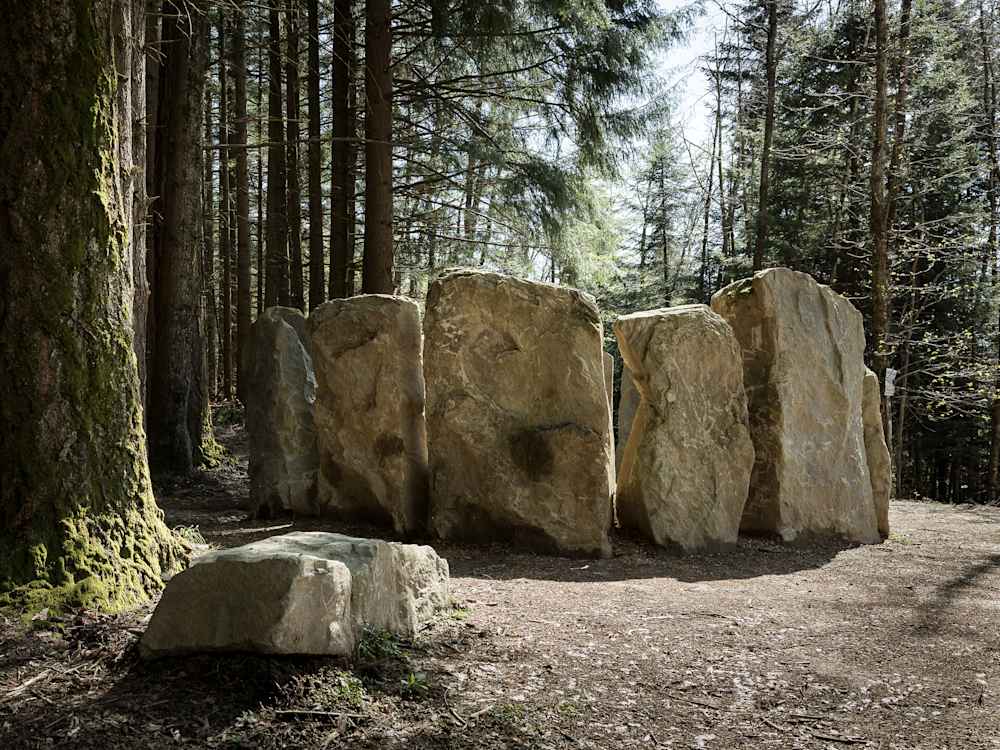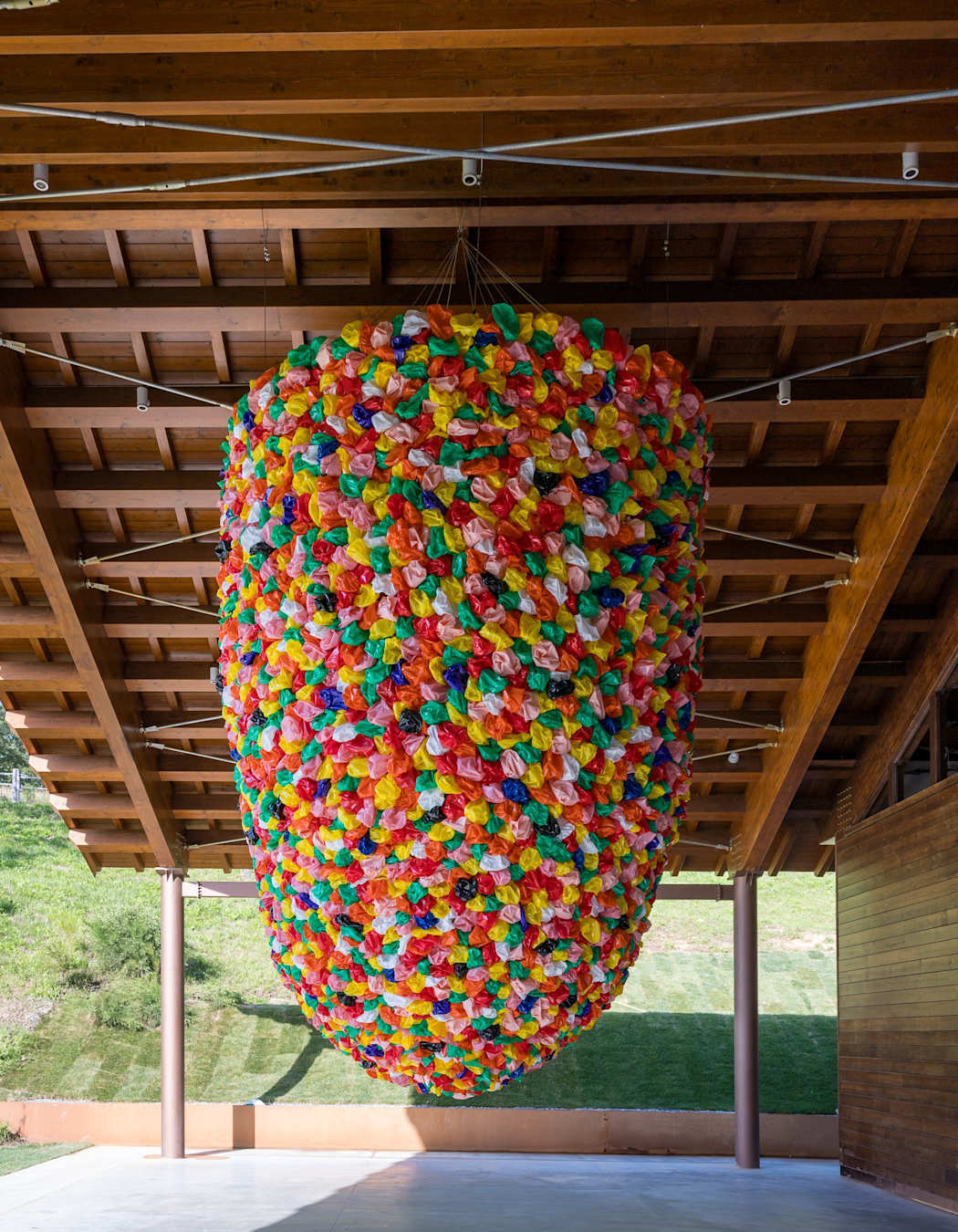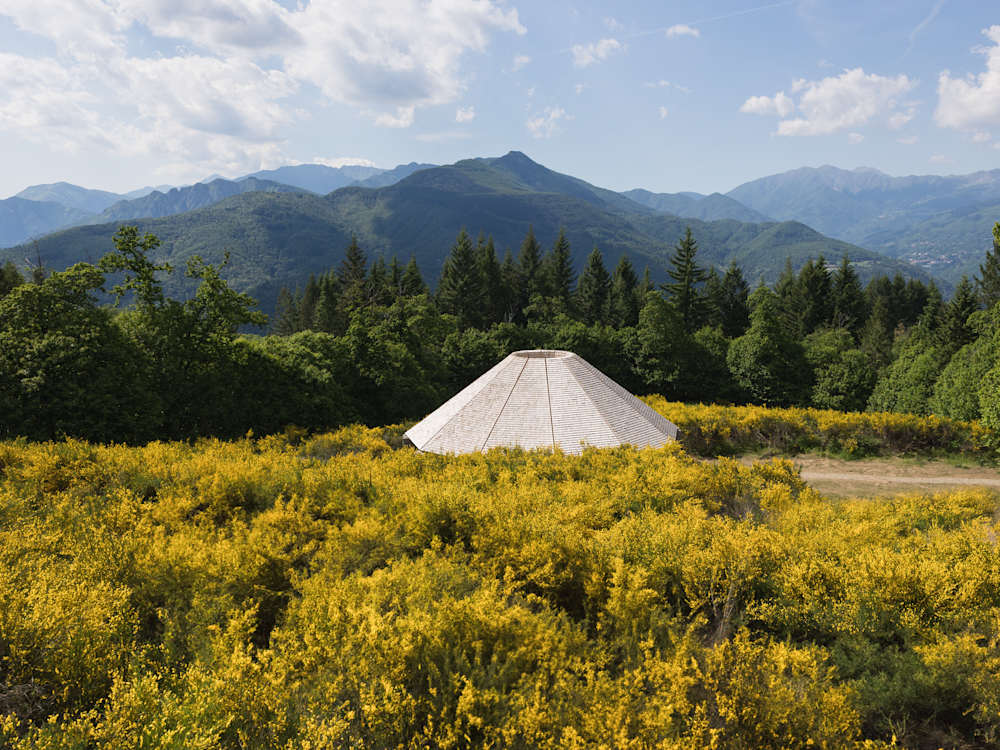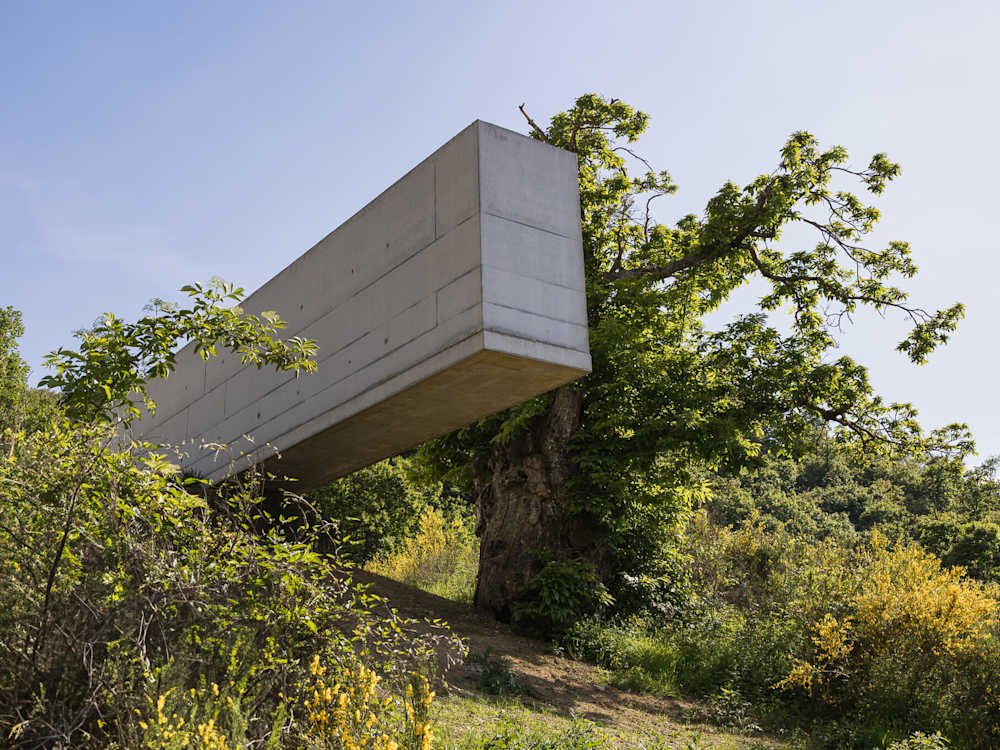Anyone who’s admired cockily contrapposto David in The Accademia, looked heavenward to The Baptistery’s writ-in-gold scriptures, fallen in love with Botticelli’s shell-surfing Venus or braved the queue for The Uffizi will understand why people pilgrimage to Tuscany to be moved further still by its art. Between a Top Gun volleyball tournament’s worth of marble-hard abs and the Medici’s heavy coffers, these works sought to enlighten through an optimistic humanist perspective, interrogating our place in the world via religious ecstasy or triumphal myths.

Matteo Thun – Fratelli Tutti
But you won’t find heroes and messiahs, or hefty gold frames, way up in the wilds of the Pistoia Appenines, a 90-minute drive northwest of Florence, where wolves prowl and the greenery grows where it pleases. Here a new art trail — a collaboration between Oasyhotel and Oasy Contemporary Art and Architecture (OCA) gallery — feels a touch more Germanic and Grimm at first, starting with a 30-minute hike into deep, untamed woodland, a liminal space for psychological prepping. But this is more of a head-clearing forest-bathe before you start on a cyclical journey that seeks to answer the question: ‘How will we inhabit the world?’ With answers attempted by artists and architects who have plenty to show rather than tell on the matter, among them legendary names such as Kengo Kuma, Quayola and Matteo Thun.
There are few better settings for existential musings of this kind. The hotel sits at the pinnacle of the Oasi Dynamo reserve, thousands of acres partly protected by the World Wildlife Foundation, where sustainability is the prime concern. Guests stay in humble wooden lodges, activities have a leave-no-trace, environmental slant and food comes from sources as local as possible. It’s a former hunting ground, too — humans historically proving even more dangerous than the recently reintroduced wolves — and so there’s even some past reckoning here in asking how peaceful coexistence is possible, and finding the balance in a safe haven for all species.

Pascale Marthine Tayou – Plastic Bags
In your cabin at Oasyhotel, you’ll find maps of wellness walks detailing which trees are the most bioenergetic (shout out to beech and spruce); in similar fashion, the immersive, 1.5 kilometre art trail is designed to be as tactile and physically invigorating as it is philosophical. First you come across converted stables, OCA’s exhibition space, and see Cameroonian artist Pascale Marthine Tayou’s work Plastic Bags: a piñata-esque piece, joyful in colour, albeit with a sobering message of environmental blight and Western overproduction. Then you leave all signs of domesticity behind in search of works that can’t and shouldn’t be confined within gallery walls; each built in situ, they gently co-habit the landscape, finding a lingua franca in the wood and stone most are constructed from.
Swedish artist David Svensson’s Home of the World remixes the colours and shapes of national flags, all flying on posts set along a curving path, ruminating on globalisation and arbitrary borders, saluting a more cohesive way of being. Then, you might hear starchitect Kengo Kuma’s ethereal Dynamo Pavilion before you see it — its delicate steel and carbon-fibre loops swoop around the trees like a brushstroke hung mid-air, singing softly as gentle breezes graze it. Kuma’s design philosophy hinges on the environment dictating the architecture, not vice versa, using renewable local materials and sensitive styling, seen to great effect in his hinoki-wood villa at Shishi-Iwa House hotel. Here, he uses the Eastern concept of ‘Ma’ (negative space) to make the work feel more ephemeral and evoke a sense of stillness, all the better for conjuring deep contemplation.

Michele De Lucchi – Nella Terra, il Cielo
Next, floating above tall grasses like an ascending UFO is a primitive stone-and-wood shelter: Nella Terra, il Cielo (On Earth, the Sky) by legendary Italian designer Michele De Lucchi — a rustic departure from the coolly cartoonish Memphis Milano style he’s known for. To make this work feel more atmospheric, he teamed up with poet Mariangela Gualtieri; standing under its conical roof listening to her recitations adds a mythical air.
Deeper into the green, fellow Memphis-group alumnus Matteo Thun also taps into society’s collective consciousness, and the stories and rituals that bind us with Fratelli Tutti. His Stonehenge-like monument, a ring of megalithic-style dolmens, was inspired by Pope Francis’s letter, Laudato Si, which addressed the urgency of environmental crises and man’s responsibility to take action as a collective; although the spirituality it summons feels somewhat more Pagan, dug deep into the earth. Thun has some experience interplaying past and present, revamping historic buildings to give them new life as luxury hotels, such as Casa Brivio in Milan, The Julius in Prague and Alstadt Vienna.
Scattered about nearby is Erosions: a series of works by multimedia artist Quayola; but you may not clock them immediately. His high-tech art usually embraces the theatrical: immersive video installations of psychedelic takes on landscape painting; large-scale projections on Neoclassical buildings; robots sculpting pixellated Roman statuary. His black lavastones seem at home in the undergrowth, until you get closer and find symbols and cuneiforms etched into them. These algorithm-driven ‘erosions’ examine tensions between nature and modern technology and whether the latter should interfere in the former. They also recall both ancient ‘scholars’ stones’ onto which millennia-old knowledge is etched, and something more otherworldly: fallen meteorites or Mayan sarcophagi supposedly depicting spaceships — messages sent from both hemispheres of time.

Alejandro Aravena – Self Regulation
Finally, solutions for new, more egalitarian habitations are offered up in Alejandro Aravena’s Self Regulation, a modified structure that encapsulates his belief in autonomous design choices tailored to the user’s needs and ‘open systems’: a structure that shifts through incremental improvements and adaptations in reaction to environmental and social changes.
It’s ok if you reach this point on the journey none the wiser as to how we’re supposed to live in this world — these works are designed to open dialogues, spur big questions and spark ideas. Perhaps the individual contemplation found at Kengo Kuma’s pavilion creates space for the communal conscientiousness invoked by Matteo Thun’s poetic shelter. Maybe technology holds fresh answers to safeguarding the wilderness, or we need more of the organic in our urban environs. Perhaps there’s a need for humans to encroach on nature to better understand how to save it, the very model Oasyhotel has gently and successfully implemented.
But then, at the end, within OCA’s gallery space, the Art is WOW! exhibition shines a little light. It showcases more than 2,000 works made at the Art Factory, a creative hub where artists in residence host recreational therapy for kids attending the Dynamo Camp (part of the nature park), all of whom are living with serious and chronic illnesses. This extraordinary project enables kids with even severe disabilities and their parents to partake in circus classes, climbing walls, theatre productions, producing radio shows and more. The art is a lasting impression of the effect the camp has on their lives — graffiti scrawls, a patchwork of paintings, sculptures built of planters and film-strip collages that glow like votive candles give attendees an individual and collective voice. It’s moving indeed and makes you all the more inclined to believe — in whatever form it’s presented — that art can have transformative powers.
You can follow the art trail until 7 November 2025. Learn more about Oasyhotel or read about how Argentinean stay Awasi Iguazú uses art as a force for change



